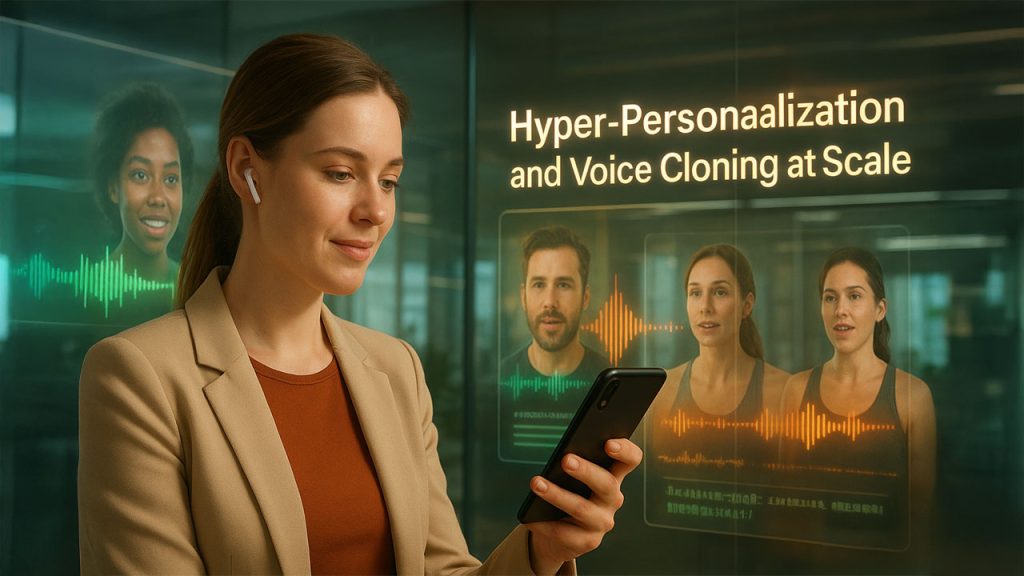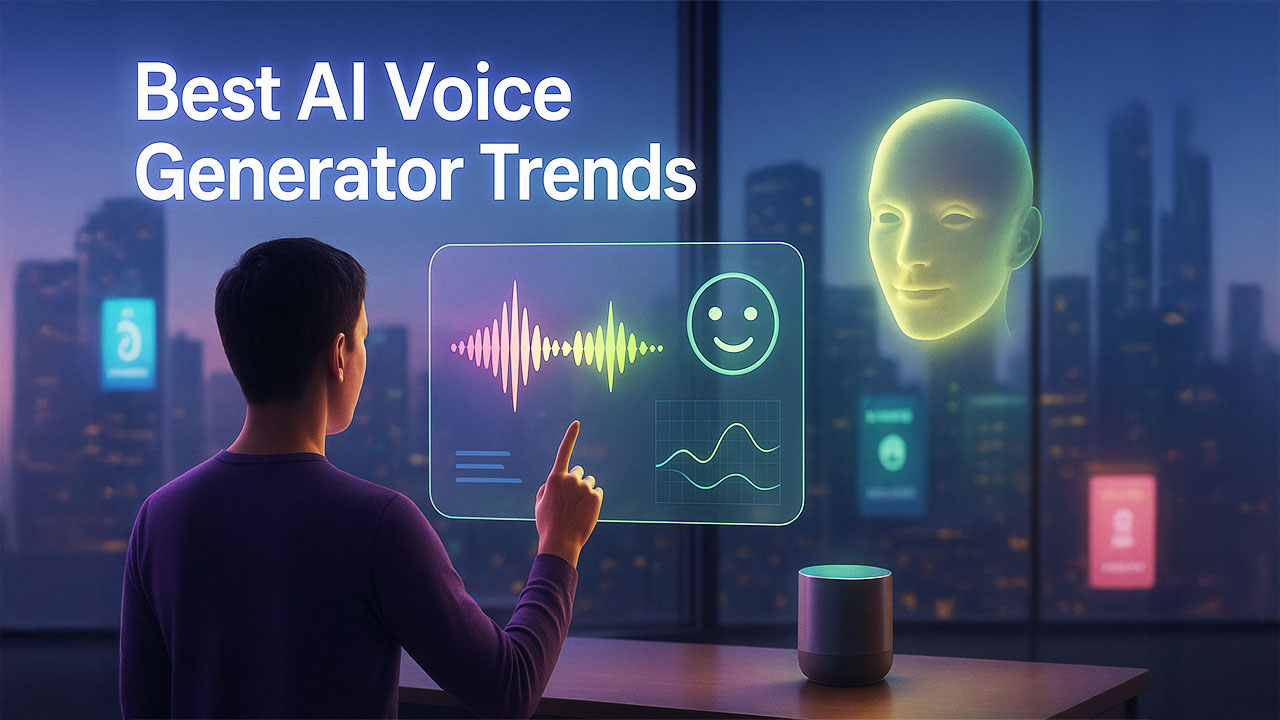Artificial intelligence is a field that is always changing, and voice creation is no different. What was once regarded as a machine-sounding and unnatural experience has now become synonymous with
Artificial intelligence is a field that is always changing, and voice creation is no different. What was once regarded as a machine-sounding and unnatural experience has now become synonymous with an incredibly advanced form of technology that genuinely can create voices that sound almost indistinguishable from human voice.
As we approach 2026, a new wave of trends will revolutionize how people consume digital content, from customer support and marketing to learning and enjoyment. Take a look at some of the trends expected to shape AI voice generators in 2026 and beyond.
Hyper-Personalization and Voice Cloning at Scale

The concept of a separate brand voice is antiquated, but in 2026, AI will introduce a completely new level of personalization. Businesses will employ AI voice generators to create a consistent, recognizable voice for their brand across all media, from their website to their automated phone system. The best AI voice generator platforms, such as Murf.AI, already lead the way by providing voice cloning features, but within the next couple of years, the technology will be more prevalent and more effective.
The trend will shift from mere brand consistency to hyper-personalization for individual users. Consider a news podcast in which the host's voice is dynamically altered to suit your preferred accent and speaking manner. Or a workout app that offers real-time guidance in the encouragement tone you hear most clearly. This degree of personalization will be fueledby more advanced AI algorithms that can mimic a voice from a short audio clip and subsequently modify it on the fly to suit various situations, emotions, and speech patterns. The technology would be so sophisticated that it would be capable of producing multilingual voices that capture the speaker's original vocal traits, bridging language gaps with an element of personal touch.
The Development of Empathic and Emotional AI Voices
For many years, the primary goal of text-to-speech (TTS) technology was to sound as human and natural as possible. That is still one of the fundamental goals, but the next milestone is emotional intelligence.
By 2026, voice generators with AI won't just read but interpret to convey real emotion, intent, and tone. This trend is an absolute game-changer for all those applications where emotional connection is paramount. Take a virtual assistant that would be able to detect frustration in one's tone and respond with calming, sympathetic words, or an audiobook narrator that would shift tone to track the emotional arc of a character.
The models are trained on massive speech datasets labelled with a variety of emotional markers as part of the technology. The models will be able to modulate prosody, including the rhythm, stress, and intonation, so as to produce an organic emotional expression. This will result in more interesting customer support chatbots, more interesting e-learning modules, and more realistic video games.
The Future of AI Voice as Multimodal and Ambient
The future of AI voice is not about noise; it's about holistic integration with other modalities. AI voice generators will be an essential component of multimodal systems with text, voice, and visual interfaces by 2026. Such integration will result in more natural and intuitive user experiences. For example, a home assistant will not only execute a voice command but also show appropriate information on a screen, or a virtual reality game will incorporate AI voices perfectly synchronized with character action and expressions.
Ambient AI is another key trend. This is a form of AI that remains constantly available, listening to the environment in passive mode in order to pre-empt user requirements without actively being asked to do so. This translates to low-latency, on-device processing for AI-powered voice generation. Rather than uploading every voice command to a cloud server, more will be processed on the device of the user for immediate responses and improved privacy. From wearable technology that provides immediate audio feedback to cars that are intelligent enough to recognize conversational input, this cutting-edge AI will power it all.
Addressing the Ethical and Security Challenges
With AI voice technology becoming more realistic and competent, so do the ethical and security concerns it poses. By 2026, the industry will place greater focus on deepfake audio concerns, consent, and voice ownership issues. New regulations and standards are underway to ensure that AI voices are responsibly used and created.
Some of the major trends in this space include:
- Ethical Royalties and Sourcing: The majority of platforms are already sourcing their AI voices through professional voice actors who are compensated for their work, and this is something which will become standard within the industry. It keeps the artists safe and provides a clean chain of consent.
- Deepfake Detection: State-of-the-art deepfake detection and watermarking technology will be a high priority of development. It will be easier for users and platforms to identify whether a voice is authentic or AI-generated, which is a necessity for preventing fraud and disinformation.
- Transparency and Governance: Businesses will be required to report more on how they use AI voices. This includes open labeling of synthetic content and building robust governance policies to prevent misuse.
Conclusion
In 2026, the AI voice generation will combine hyper-personalization, emotional intelligence, multimodal integration, and ethical guardrails, allowing voices to come off as even more human-like, captivating, and blended into daily digital experiences, fundamentally altering the way we engage with technology and media.
Respond to this article with emojis






